Growing Vines on a Wall
Summary
– Choose climbing plants for a wall in good condition
– Choose trellised climbers for all facades
– Plant your climbers
– Maintain your vines
An ordinary wall becomes welcoming and immediately charming when covered with climbing plants. Moreover, whatever the exposure of your wall, you will always find a climber, flowering or not, which adapts to it.
This article explains how to choose among the different plants, how to plant them and how to maintain them to cover a facade with climbing plants.
Choose climbing plants with spikes for a wall in good condition
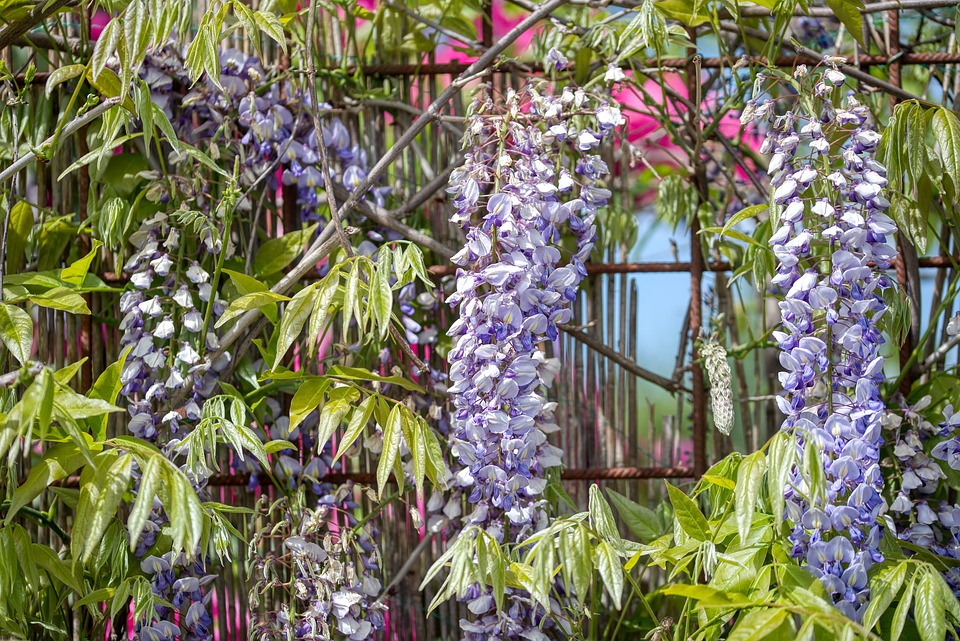
Equipped with spikes, some climbing plants cling to the facade on their own, without the need for trellising. Ivy, Virginia creeper and climbing hydrangea belong to this category.
– Advantage: you don’t need to intervene; you plant your climber and let it attack the facade.
– Disadvantage: if the wall is in poor condition, this type of climber risks damaging it further. On the other hand, they are perfectly suitable for a wall in good condition.
Ivy
Choose ivy for:
– Its persistent vegetation in winter.
– The choice between different varieties (size of leaves, colours).
– Its spikes allowing it to climb alone.
– Its adaptability to all exposures, including the north.
Virginia creeper
Choose the Virginia creeper for:
– A fast cover.
– The charm that it gives to the facades, that it can cover in totality.
– Its glorious red colours in autumn (all the more vivid as the facade receives sun).
– Its spikes allowing it to climb alone.
– The choice between different varieties with more or less cut leaves.
– All exposures, from north to south.
The climbing hydrangea or its cousin, the Schizophragma
Choose the climbing hydrangea or the Schizophragma for:
– The beauty of its small creamy white flowers borne in corymbs 20-25 cm in diameter.
– Its very light perfume.
– Its spikes allow it to climb alone.
Plant the climbing hydrangea in the following situations:
– Exposure: north, northwest, northeast facades.
– Good garden soil, ideally mixed with heather soil.
Choose climbers to be trained on all facades
All other climbers except annuals must be trellised, i.e. fixed to support covering the facade to allow them to climb.
The most commonly used supports are trellises, generally made of wood, sometimes plastic, bought in garden centers or trellises that you make yourself.
Note: some trellises are expandable and can better fit the wall you want to decorate.
Do not place the trellis directly on the wall, but leave a 10 cm space between the support and the wall, so that the air can circulate to the plants.
Here are the climbers to be trellised to adapt to your facade’s exposure.
Sunny facade
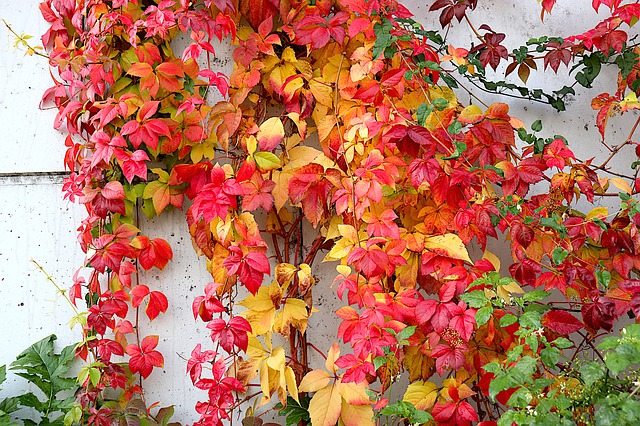
– Climbing rose:
◦ Fast-growing. Long flowering is remontant, even continuously flowering from June to frost.
◦ Good garden soil, or even limestone soil if the rootstock is suitable, but not sandy soil.
◦ South, southeast, southwest facades.
Note: some roses accept the northeast or northwest: Madame Alfred Carrière, Blush Noisette, Ghislaine de Féligonde…
– Chinese wisteria:
◦ Sumptuous and slightly fragrant spring bloom.
◦ Foliage with pretty green leaves turning golden yellow in fall. Slight upward movement.
◦ Sunny frontage.
◦ Good garden soil: wisteria does not like too chalky, heavy or clayey. Attached to a trellis of foolproof strength because its branches are particularly vigorous.
– Officinal jasmine:
◦ Blooms in small white stars from June to October.
◦ Semi-evergreen foliage.
◦ Southern frontage is preferred.
– Annual climbers (Volubilis, climbing nasturtiums, climbing sweet peas…):
◦ Fresh, country look.
◦ Lovely colours.
◦ Quick coverage.
◦ No trellising is required (stakes are all you need).
◦ Sunny fronts.
◦ Ephemeral facade decoration.
Half-shade
– Honeysuckle:
◦ Delicious fragrance.
◦ Long blooming season, June through October.
◦ Quick to cover.
◦ Choice of different colours: creamy yellow, red…
◦ Adaptable to all types of soil.
◦ Although it can withstand the full sun of a south facade in a pinch, it is the East or West facade.
– Golden hops:
◦ Fast covering.
◦ Bright golden-green leaves.
◦ On an east or west facade.
Any exposure
– Clematis:
◦ Flowers: star-shaped, from small to large (the most extensive reach 20 cm in diameter!).
◦ Associates very well with the climbing rose.
◦ Diversity of shapes and colours (white, the entire range of pinks and purples, purple, blue).
◦ Different varieties allow for staggering flowering from early spring to fall and take over from a non-remontant climbing rose if necessary.
◦ Exposure: in principle, in the sun (provided the foot is in the shade); however, several varieties appreciate half-shade or shade.
Note: for the northern facade, think of certain rosebushes that adapt to shady facades, as well as suction cup climbers that adapt to all exposures, provided that the facade is in good condition (see the previous step).
Plant your climbers
– Preferably buy climbers in containers: bare roots are likely to grow more slowly.
– Plant them in September-October or April-May.
– If you want to cover a whole facade (ivy, Virginia creeper, climbing hydrangeas), buy several plants that you will plant 50 cm apart from each other.
General case (excluding clematis and annuals)
– With a spading fork, dig a hole 50 cm in diameter and deep.
– Spread a few centimetres of gravel at the bottom of the hole to ensure good drainage.
– Mix a third of garden soil and two-thirds of good potting soil (heather soil for climbing hydrangeas): put a few centimetres above the gravel.
– Remove the root ball from the container after soaking it for 10 minutes in water. If the roots form a “bun”, untangle them gently and cut off any excessively long ends.
– Place your plant in the hole, tilting it slightly towards its support. The top of the root ball should be 5 to 10 cm below ground level.
– Fill the hole with the rest of the potting soil mixture.
– Pack well and water thoroughly, whatever the weather (at least 10 litres of water).
– Tie the stems to the trellis (except for plants with spikes).
Plant clematis
– Place the root ball horizontally in the planting hole.
– Bury the stem over 10 to 15 cm long.
– Carefully straighten the rest of the stem.
– After planting, place protection (tile, piece of flower pot…) at the foot of the plant, as clematis like to have their feet in the shade and their head in the sun. You can also plant a perennial providing shade at the foot of your clematis.
Plant annual climbers
– Sow directly in place in April-May.
– Thin out when seedlings appear.
– Place stakes along the wall as soon as the remaining seedlings gain strength.
Maintain your climbing plants
– Water regularly, especially the first year after planting.
– Prune according to the plants:
◦ Spiky plants do not prune or clear windows and prevent roof invasion.
◦ Spring-blooming plants (some roses and clematis) prune just after flowering.
◦ Summer-blooming plants prune in winter.
◦ Hops can be shaved off at the base and grow the following spring again.
◦ Wisteria plants require pruning several times a year.
Equipment for growing climbing plants on a wall
Watering can
String
Spade fork
Gravel
Pruning shears
Soil
Trellis
Wooden stake

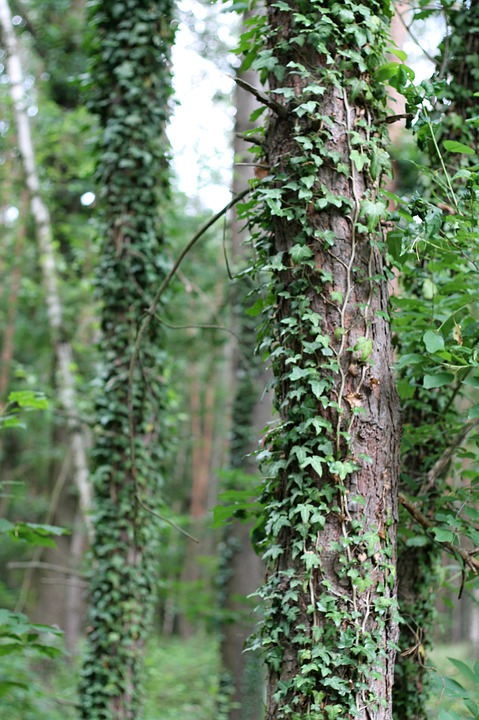
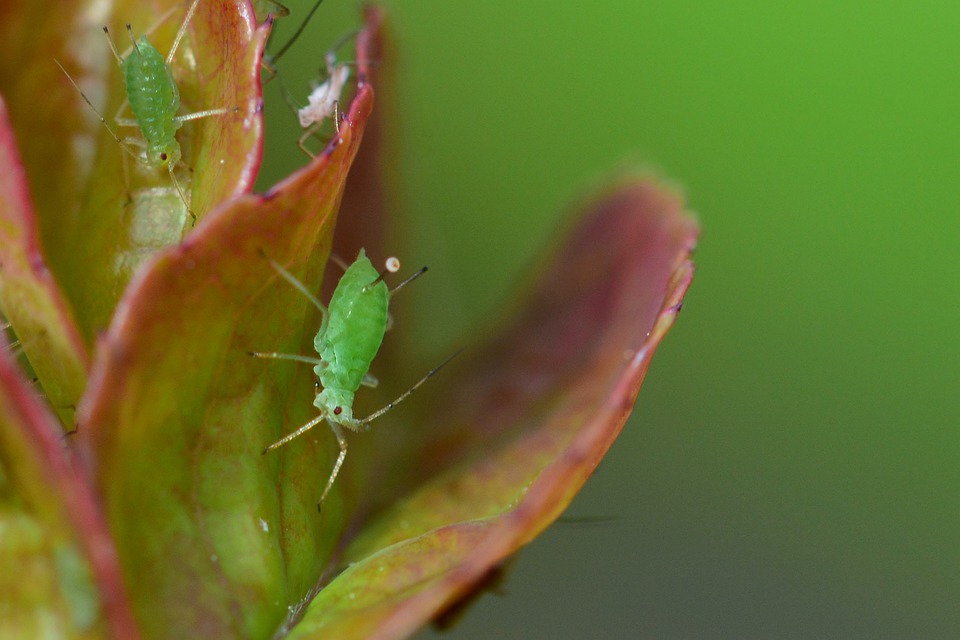
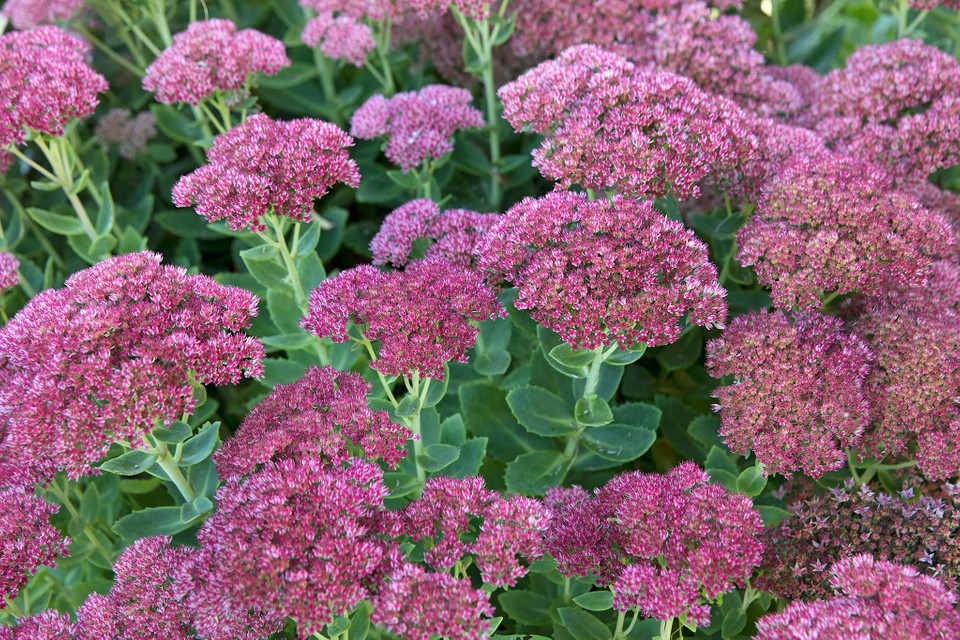
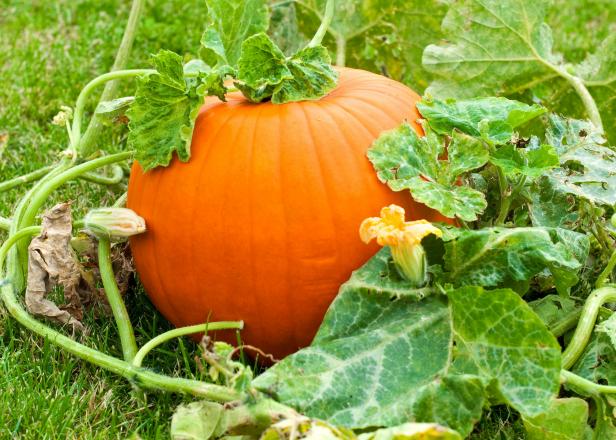
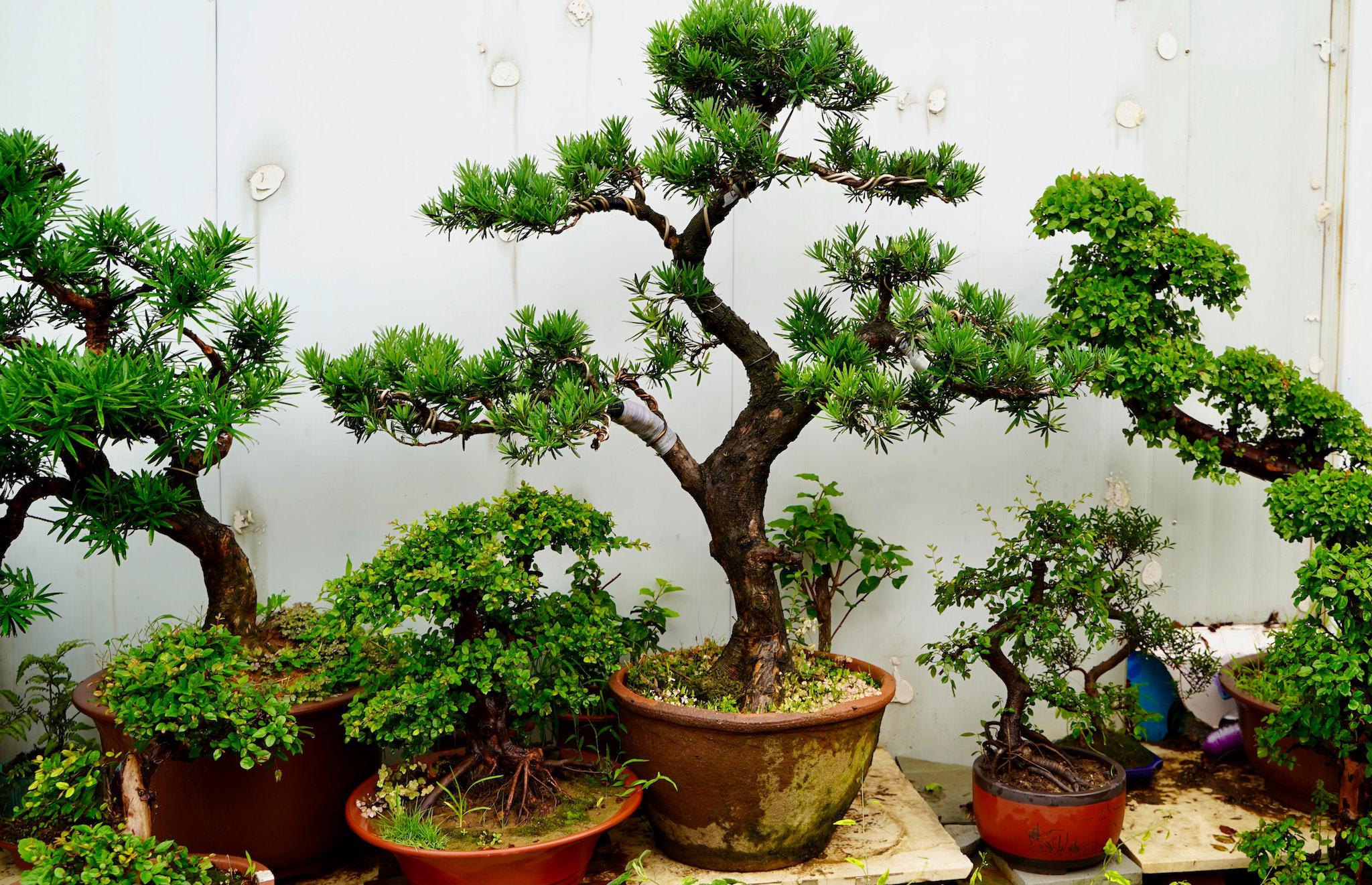
1 Comment
[…] – Growing Vines on a Wall; […]